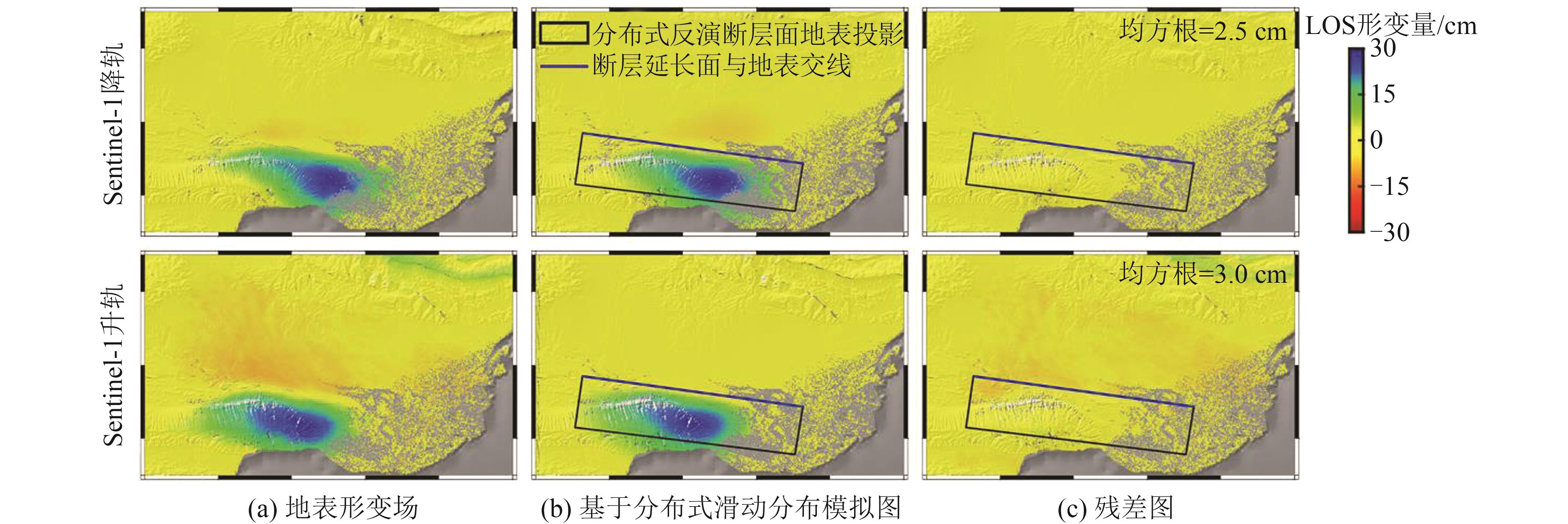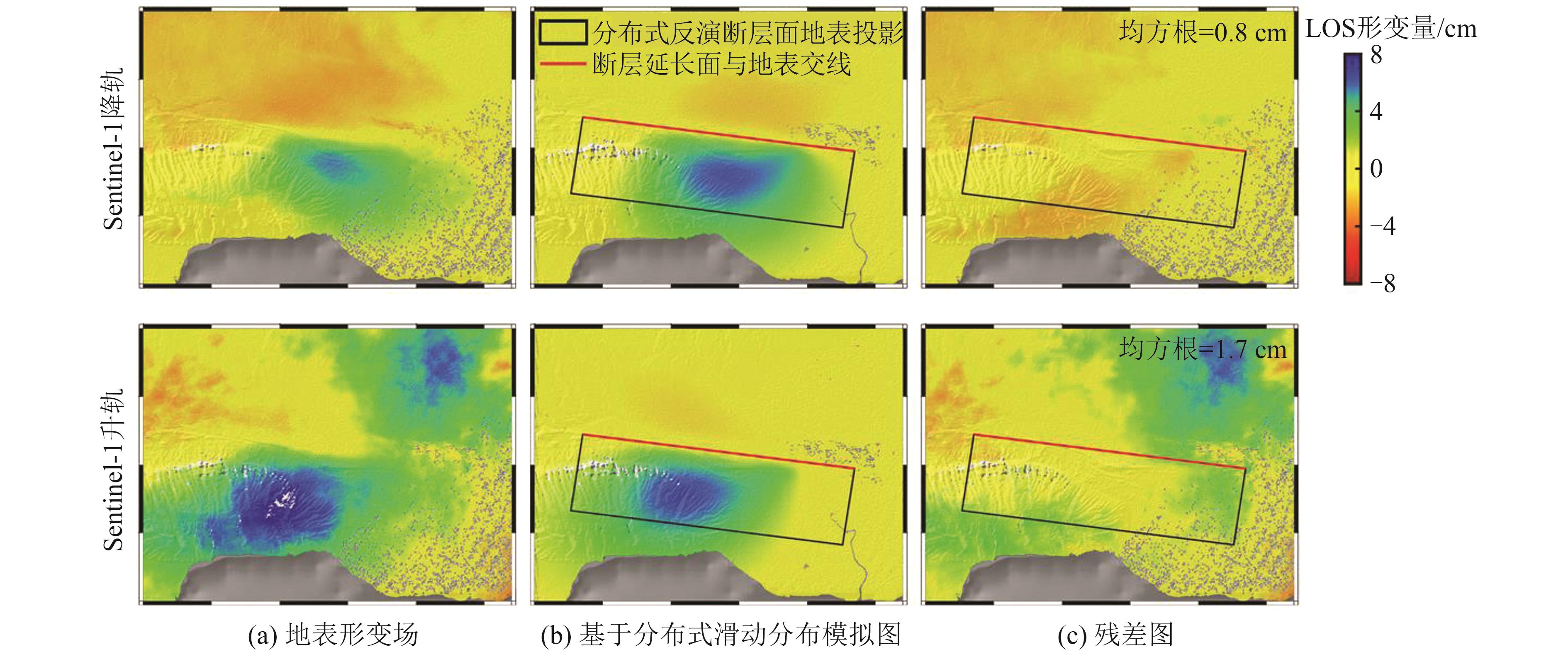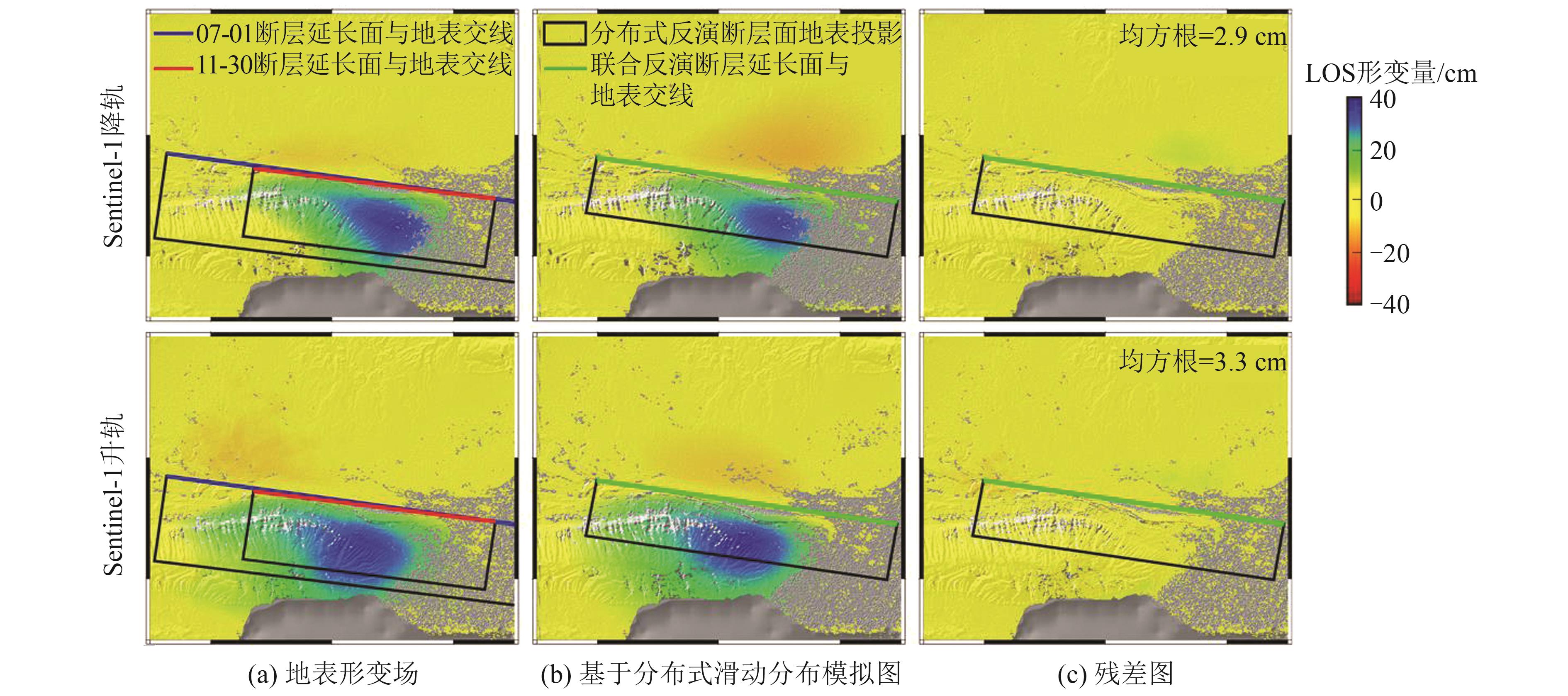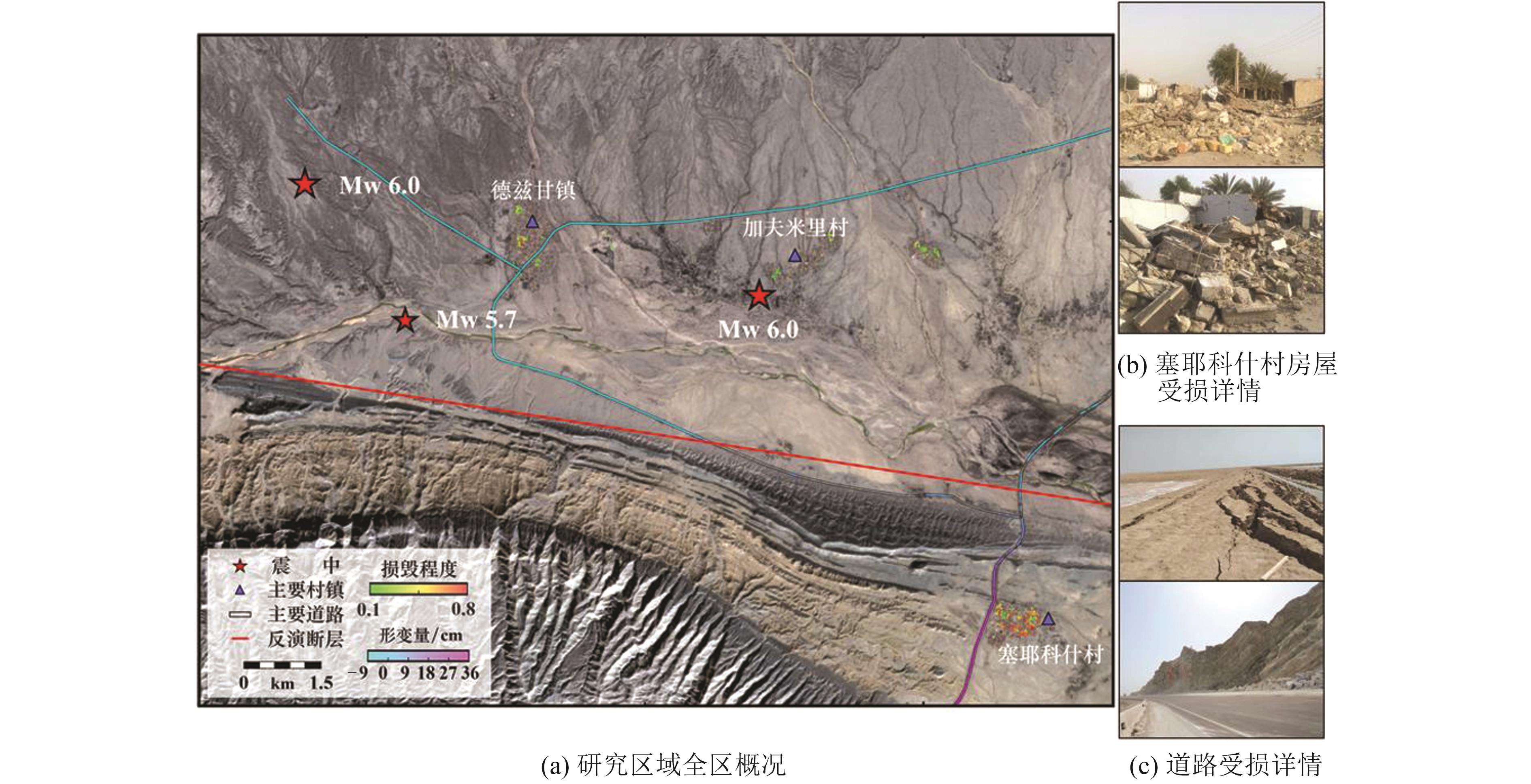Triggering Mechanism and Impact on Infrastructure of the 2022 Iran Earthquake Sequence Revealed by InSAR Observations
-
摘要:
2022-07-01伊朗南部的霍尔木兹甘省发生两次Mw 6.0和一次Mw 5.7地震,11-30在距这两次地震不足10 km的位置,又发生了Mw 5.7地震。利用欧洲空间局哨兵一号数据,通过合成孔径雷达干涉测量技术获取2022-07-01—2022-11-30地震序列的同震形变场,进而利用弹性半空间的位错模型反演得到地震序列的断层参数和滑动分布,并利用库仑应力研究了07-01地震对11-30地震的触发关系,讨论了这一地震序列的断层几何和对公路等震区基础设施的影响。结果表明,这一地震序列均为逆冲型地震,最大地表永久变形量超过36 cm,地震造成了震中区域公路和房屋等基础设施不同程度损毁。07-01地震的断层最大滑动量为2.4 m,发生在地下8 km左右;11-30地震的断层最大滑动量约为0.5 m,发生在地下8 km左右。对地震序列进行库仑应力分析显示,07-01地震对11-30地震有显著触发作用。这一地震序列中,不同地震的发震断层在空间上交叉重叠度较高,说明可能发生在同一个逆冲断层系统,而这一断层系统是通过此次地震序列新发现的隐伏断层,其未来的地震危险性值得持续关注。
Abstract:ObjectiveOn July 1, 2022, Two Mw 6.0 and an Mw 5.7 earthquake events occurred in Hormuzgan Province of southern Iran, followed by an Mw 5.7 earthquake on 30 November at a location of less than 10 km.
MethodsWe first use European Space Agency Sentinel-1 data to obtain the coseismic deformation of the 1 July and 30 November events by interferometric synthetic aperture radar(InSAR)technique and invert the InSAR result for fault parameters and slip distribution of the earthquake sequence. Then we investigate the triggering relationship of the 1 July earthquakes to the 30 November earthquake by using the Coulomb stress. Finally, we discuss the fault geometry of this earthquake sequence and its impact on infrastructure and highways in earthquake areas.
ResultsExperimental results show that all events in this earthquake sequence are thrust-type, with the maximum coseismic deformation reaching 36 cm, which together with the induced geohazards, cause varying degrees of damage to infrastructure (e.g., roads and houses in the epicenter area). The maximum slip on the fault of the 1 July earthquakes is 2.4 m, occurring at a depth of about 8 km, and the maximum slip on the fault of the 30 November earthquake is 0.5 m (about 8 km deep). The Coulomb stress change results reveal that the 1 July earthquakes have a significant triggering effect on the 30 November earthquake.
ConclusionsThe high spatial overlap of the different earthquakes faults in this earthquake sequence suggests that they may have occurred on the same thrust-fault system, which are hidden faults newly discovered through the sequence. The future seismic hazard of this fault system deserves continued attention.
-
感谢ESA提供的Sentinel‑1A雷达影像数据;文中绝大部分图件采用GMT绘制。
http://ch.whu.edu.cn/cn/article/doi/10.13203/j.whugis20240106
-
表 1 用于InSAR分析的SAR影像参数
Table 1 Parameters of SAR Images for InSAR Analysis
地震发生时间 轨道 飞行方向 获取时间 时间基线/d 空间基线/m 主影像 辅影像 2022-07-01 130 升轨 2022-06-22 2022-07-04 12 20.9 166 降轨 2022-06-25 2022-07-07 12 -86.8 2022-11-30 130 升轨 2022-11-25 2022-12-07 12 115.1 166 降轨 2022-11-28 2022-12-10 12 0.8 表 2 不同断层模型对应的残差均方根、拟合度、断层参数
Table 2 Residual Root Mean Squares, Fitting Ratios and Fault Parameters for Different Fault Models
断层模型 走向/(°) 倾角/(°) 长度/km 宽度/km 震源位置(本文) 残差均方根/cm 拟合度/% 2022-07-01反演模型 98.0 61.2 30.0 15.0 (55.32°E,26.84°N) 2.4 95.5 2022-11-30反演模型 99.7 68.0 22.0 16.0 (55.33°E,26.84°N) 1.4 71.3 两次联合反演模型 102.0 65.0 25.0 15.0 (55.32°E,26.85°N) 2.9 95.5 应用于2022-07-01 102.0 63.0 30.0 15.0 (55.32°E,26.85°N) 2.6 94.5 应用于2022-11-30 102.0 67.0 22.0 15.0 (55.32°E,26.85°N) 1.4 70.0 -
[1] Yang Y H, Li X Y, Hu J C, et al. The 2022 Hormozgan Doublet Earthquake: Two Blind Thrusts-Related Folding in Zagros Fold-and-Thrust Belt, Southeast Iran[J]. Geophysical Research Letters, 2023, 50(4): e2022GL101902.
[2] Metz M, Asayesh B M, Aref M M, et al. The July-December 2022 Earthquake Sequence in the Southeas‑tern Fars Arc of Zagros Mountains, Iran[J]. Seismica, 2023, 2(2): 1-19.
[3] Vernant P, Nilforoushan F, Hatzfeld D, et al.Present-Day Crustal Deformation and Plate Kinematics in the Middle East Constrained by GPS Measurements in Iran and Northern Oman[J]. Geophysical Journal International, 2004, 157(1): 381-398.
[4] Oveisi B, Lavé J, van der Beek P, et al. Thick- and Thin-Skinned Deformation Rates in the Central Zagros Simple Folded Zone (Iran) Indicated by Displacement of Geomorphic Surfaces[J]. Geophysical Journal International, 2009, 176(2): 627-654.
[5] 李佳纬, 孙继敏, 吕丽星, 等. 扎格罗斯前陆盆地晚中新世快速剥露证据: 来自磷灰石(U-Th)/He的约束[J]. 地质学报, 2020, 94(12): 3674-3688. Li Jiawei, Sun Jimin, Lixing Lü, et al. Evidence of Rapid Miocene Exhumation of the Zagros Foreland Basin: Constraints from Apatite (U-Th)/He Ages[J]. Acta Geologica Sinica, 2020, 94(12): 3674-3688.
[6] Edey A, Allen M B, Nilfouroushan F. Kinematic Variation Within the Fars Arc, Eastern Zagros, and the Development of Fold-and-Thrust Belt Curvature[J]. Tectonics, 2020, 39(8): e2019TC005941.
[7] Snidero M, Muñoz J A, Carrera N, et al. Temporal Evolution of the Darmadan Salt Diapir, Eastern Fars Region, Iran[J]. Tectonophysics, 2019, 766: 115-130.
[8] Talebian M, Jackson J. A Reappraisal of Earthquake Focal Mechanisms and Active Shortening in the Zagros Mountains of Iran[J]. Geophysical Journal International, 2004, 156(3): 506-526.
[9] Jackson J, Fitch T. Basement Faulting and the Focal Depths of the Larger Earthquakes in the Zagros Mountains (Iran) [J]. Geophysical Journal International, 1981, 64(3):561-586.
[10] Werner C, Wegmuller U, Strozzi T, et al. GAMMA SAR and Interferometric Processing Software[C]//ERS-Envisat Symposium, Gothenburg, Sweden,2000.
[11] Massonnet D, Feigl K L. Radar Interferometry and Its Application to Changes in the Earth’s Surface[J]. Reviews of Geophysics,1998, 36(4): 441-500.
[12] Wright T J, Parsons B E, Lu Z. Toward Mapping Surface Deformation in Three Dimensions Using InSAR[J]. Geophysical Research Letters, 2004, 31(1): L01607.
[13] Eineder M, Hubig M, Milcke B. Unwrapping Large Interferograms Using the Minimum Cost Flow Algorithm[C]//IEEE International Geoscien‑ce and Remote Sensing,Seattle,USA, 1998.
[14] Yu C, Li Z H, Penna N T, et al. Generic Atmospheric Correction Model for Interferometric Synthetic Aperture Radar Observations[J]. Journal of Geophysical Research: Solid Earth, 2018, 123(10): 9202-9222.
[15] Xiao R Y, Yu C, Li Z H, et al. Statistical Assessment Metrics for InSAR Atmospheric Correction: Applications to Generic Atmospheric Correction Online Service for InSAR (GACOS) in Eastern China[J]. International Journal of Applied Earth Observation and Geoinformation, 2021, 96: 102289.
[16] Okada Y. Internal Deformation Due to Shear and Tensile Faults in a Half-Space[J]. Bulletin of the Seismological Society of America, 1992, 82(2): 1018-1040.
[17] Song C, Yu C, Li Z H, et al. Coseismic Slip Distribution of the 2019 Mw 7.5 New Ireland Earthquake from the Integration of Multiple Remote Sensing Techniques[J].Remote Sensing,2019,11(23): 2767.
[18] 李永生, 冯万鹏, 张景发, 等. 2014年美国加州纳帕MW6.1地震断层参数的Sentinel-1A InSAR反演[J]. 地球物理学报, 2015, 58(7): 2339-2349. Li Yongsheng, Feng Wanpeng, Zhang Jingfa, et al. Coseismic Slip of the 2014 Mw 6.1 Napa, California Earthquake Revealed by Sentinel-1A InSAR[J]. Chinese Journal of Geophysics, 2015, 58(7): 2339-2349.
[19] 李振洪, 韩炳权, 刘振江, 等. InSAR数据约束下2016年和2022年青海门源地震震源参数及其滑动分布[J]. 武汉大学学报(信息科学版), 2022, 47(6): 887-897. Li Zhenhong, Han Bingquan, Liu Zhenjiang, et al. Source Parameters and Slip Distributions of the 2016 and 2022 Menyuan, Qinghai Earthquakes Constrained by InSAR Observations[J]. Geomatics and Information Science of Wuhan University, 2022, 47(6): 887-897.
[20] Jonsson S. Fault Slip Distribution of the 1999 Mw 7.1 Hector Mine,California,Earthquake, Estimated from Satellite Radar and GPS Measurements[J]. Bulletin of the Seismological Society of America, 2002, 92(4): 1377-1389.
[21] 冯万鹏, 李振洪. InSAR资料约束下震源参数的PSO混合算法反演策略[J]. 地球物理学进展, 2010, 25(4): 1189-1196. Feng Wanpeng, Li Zhenhong. A Novel Hybrid PSO/Simplex Algorithm for Determining Earthquake Source Parameters Using InSAR Data[J]. Progress in Geophysics, 2010, 25(4): 1189-1196.
[22] 王乐洋, 赵雄, 高华. 大地测量地震断层同震滑动分布反演的两步解法[J]. 武汉大学学报(信息科学版), 2019, 44(9): 1265-1273. Wang Leyang, Zhao Xiong, Gao Hua. A Two-Step Solution Method for the Coseismic Slip Distribution Inversion of Earthquake Faults in Geodesy[J]. Geomatics and Information Science of Wuhan University, 2019, 44(9): 1265-1273.
[23] Fukahata Y, Wright T J. A Non-linear Geodetic Data Inversion Using ABIC for Slip Distribution on a Fault with an Unknown Dip Angle[J]. Geophysical Journal International, 2008, 173(2): 353-364.
[24] Feng W P, Li Z H, Elliott J R, et al. The 2011 MW 6.8 Burma Earthquake: Fault Constraints Provided by Multiple SAR Techniques[J]. Geophysical Journal International, 2013, 195(1): 650-660.
[25] Liu Z, Li Z, Yu C, et al. Stress Triggering and Future Seismic Hazards Implied by Four Large Earthquakes in the Pamir from 2015 to 2023 Revealed by Sentinel-1 Radar Interferometry[J]. Geophysical Journal International,2024, 237: 887-901.
[26] Stein R S. The Role of Stress Transfer in Earthquake Occurrence[J]. Nature,1999, 402: 605-609.
[27] Shan B, Zheng Y, Liu C L, et al. Coseismic Coulomb Failure Stress Changes Caused by the 2017 M 7.0 Jiuzhaigou Earthquake, and Its Relationship with the 2008 Wenchuan Earthquake[J]. Science China Earth Sciences, 2017, 60(12): 2181-2189.
[28] Shahryar S A, Tahmores Y, Mohsen J, et al. Preliminary Results of Earthquake Geology Studies Within the Macroseismic Zone of Triple Earthquakes on July2, 2022 Sayeh Khosh East of Bandar Lengeh (Magnitudes 6.1, 6.1 and 6.3), South Iran[EB/OL].(2023-01-01)[2024-03-01].https://gsi.ir/file/download/news/1663058310-english-report-sayeh-khosh.pdf.
[29] Liu H H,Song C, Li Z H, et al. A New Method for the Identification of Earthquake-Damaged Buildings Using Sentinel-1 Multitemporal Coherence Optimized by Homogeneous SAR Pixels and Histogram Matching[J]. IEEE Journal of Selected Topics in Applied Earth Observations and Remote Sensing, 2024, 17: 7124-7143.
[30] Meng J N, Kusky T, Mooney W D, et al. Surface Deformations of the 6 February 2023 Earthquake Sequence, Eastern Turkiye[J]. Science, 2024, 383:298-305.
-
期刊类型引用(4)
1. 朱杰,郑加柱,陈红华,杨静,胡平昌,陆敏燕. 结合POI数据的南京市商业中心识别与集聚特征研究. 现代测绘. 2022(06): 34-39 .  百度学术
百度学术
2. 金澄,安晓亚,陈占龙,马啸川. 矢量居民地多边形多级图划分聚类方法. 武汉大学学报(信息科学版). 2021(01): 19-29 .  百度学术
百度学术
3. 张铭龙,何贞铭. 基于因子分析法的城市商业中心抽取研究. 地理空间信息. 2021(08): 58-60+64+5 .  百度学术
百度学术
4. 李卫东,张铭龙,段金龙. 基于POI数据的南京市空间格局定量研究. 世界地理研究. 2020(02): 317-326 .  百度学术
百度学术
其他类型引用(3)





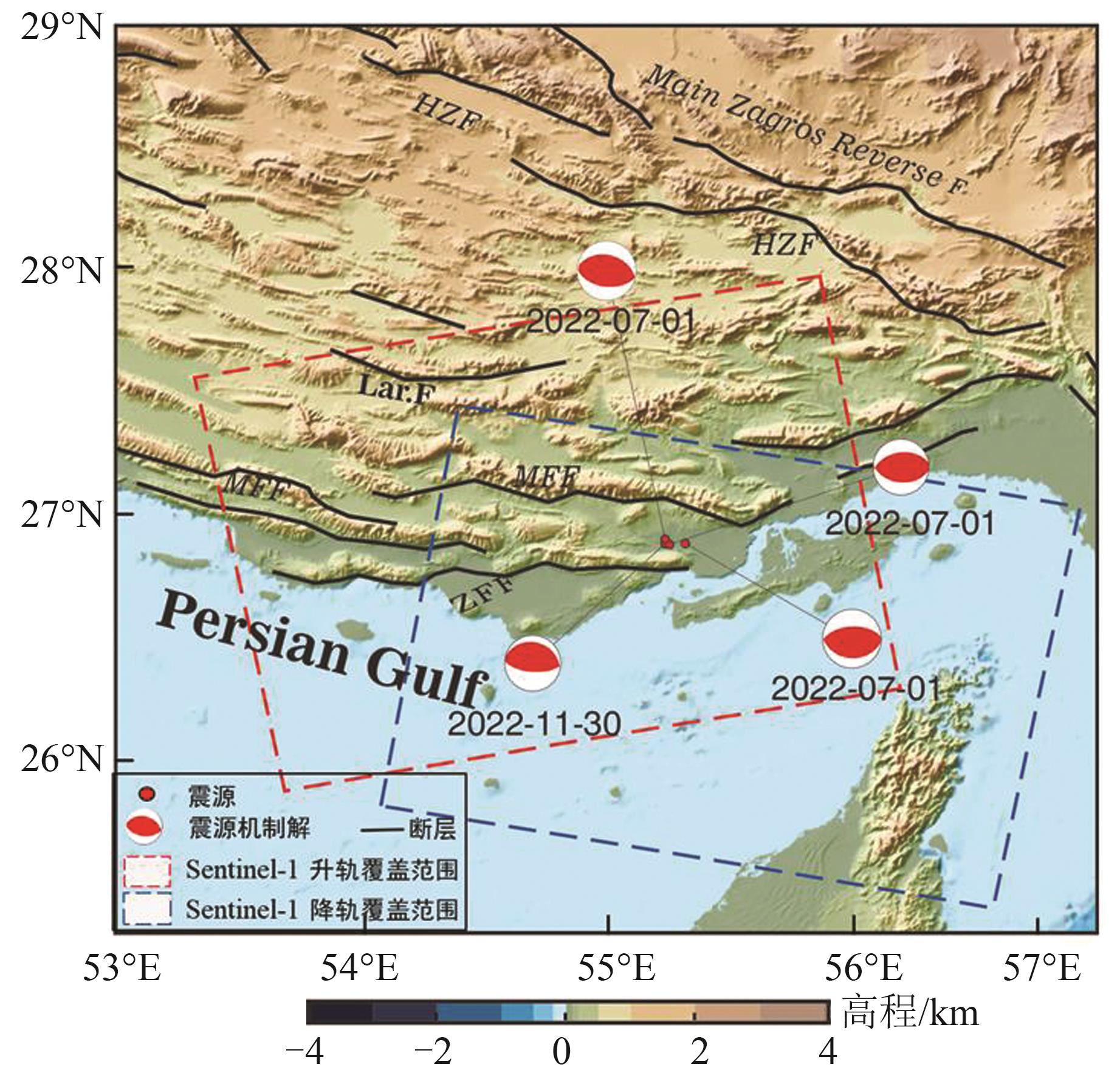
 下载:
下载:
